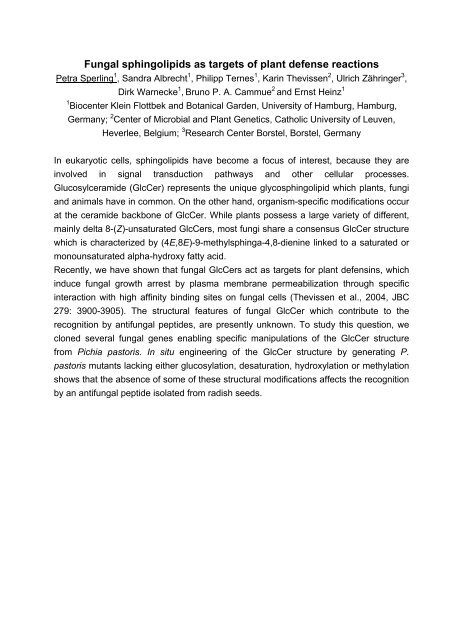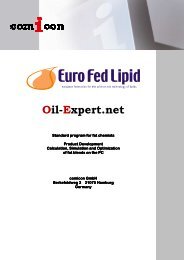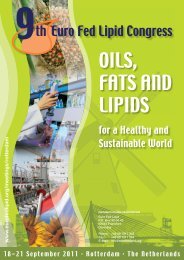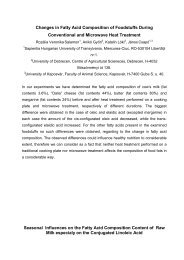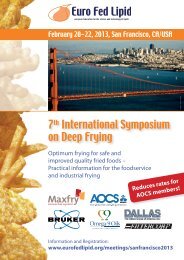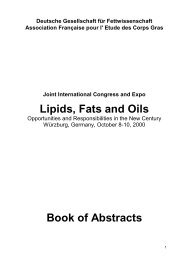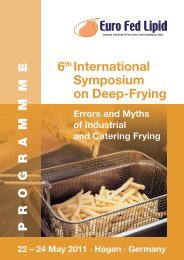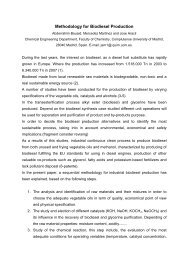Abstracts now available online - Euro Fed Lipid
Abstracts now available online - Euro Fed Lipid
Abstracts now available online - Euro Fed Lipid
You also want an ePaper? Increase the reach of your titles
YUMPU automatically turns print PDFs into web optimized ePapers that Google loves.
Fungal sphingolipids as targets of plant defense reactions<br />
Petra Sperling 1 , Sandra Albrecht 1 , Philipp Ternes 1 , Karin Thevissen 2 , Ulrich Zähringer 3 ,<br />
Dirk Warnecke 1 , Bruno P. A. Cammue 2 and Ernst Heinz 1<br />
1<br />
Biocenter Klein Flottbek and Botanical Garden, University of Hamburg, Hamburg,<br />
Germany; 2 Center of Microbial and Plant Genetics, Catholic University of Leuven,<br />
Heverlee, Belgium; 3 Research Center Borstel, Borstel, Germany<br />
In eukaryotic cells, sphingolipids have become a focus of interest, because they are<br />
involved in signal transduction pathways and other cellular processes.<br />
Glucosylceramide (GlcCer) represents the unique glycosphingolipid which plants, fungi<br />
and animals have in common. On the other hand, organism-specific modifications occur<br />
at the ceramide backbone of GlcCer. While plants possess a large variety of different,<br />
mainly delta 8-(Z)-unsaturated GlcCers, most fungi share a consensus GlcCer structure<br />
which is characterized by (4E,8E)-9-methylsphinga-4,8-dienine linked to a saturated or<br />
monounsaturated alpha-hydroxy fatty acid.<br />
Recently, we have shown that fungal GlcCers act as targets for plant defensins, which<br />
induce fungal growth arrest by plasma membrane permeabilization through specific<br />
interaction with high affinity binding sites on fungal cells (Thevissen et al., 2004, JBC<br />
279: 3900-3905). The structural features of fungal GlcCer which contribute to the<br />
recognition by antifungal peptides, are presently unk<strong>now</strong>n. To study this question, we<br />
cloned several fungal genes enabling specific manipulations of the GlcCer structure<br />
from Pichia pastoris. In situ engineering of the GlcCer structure by generating P.<br />
pastoris mutants lacking either glucosylation, desaturation, hydroxylation or methylation<br />
shows that the absence of some of these structural modifications affects the recognition<br />
by an antifungal peptide isolated from radish seeds.


